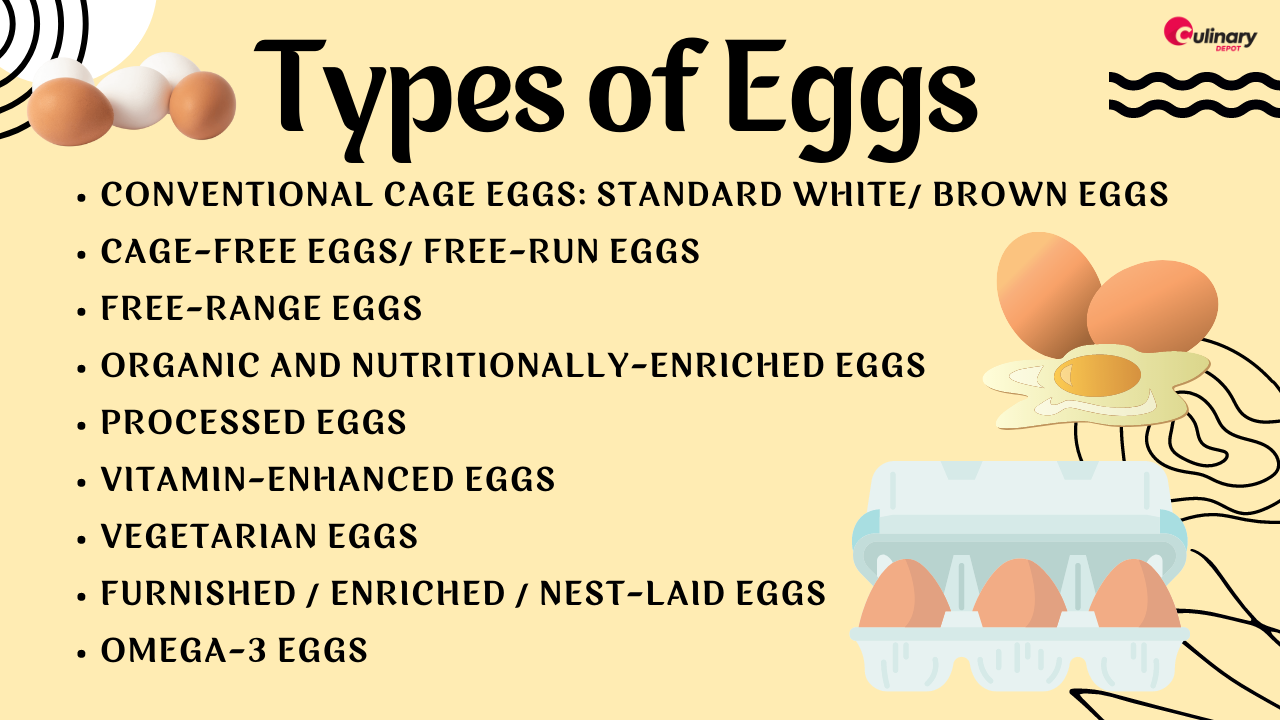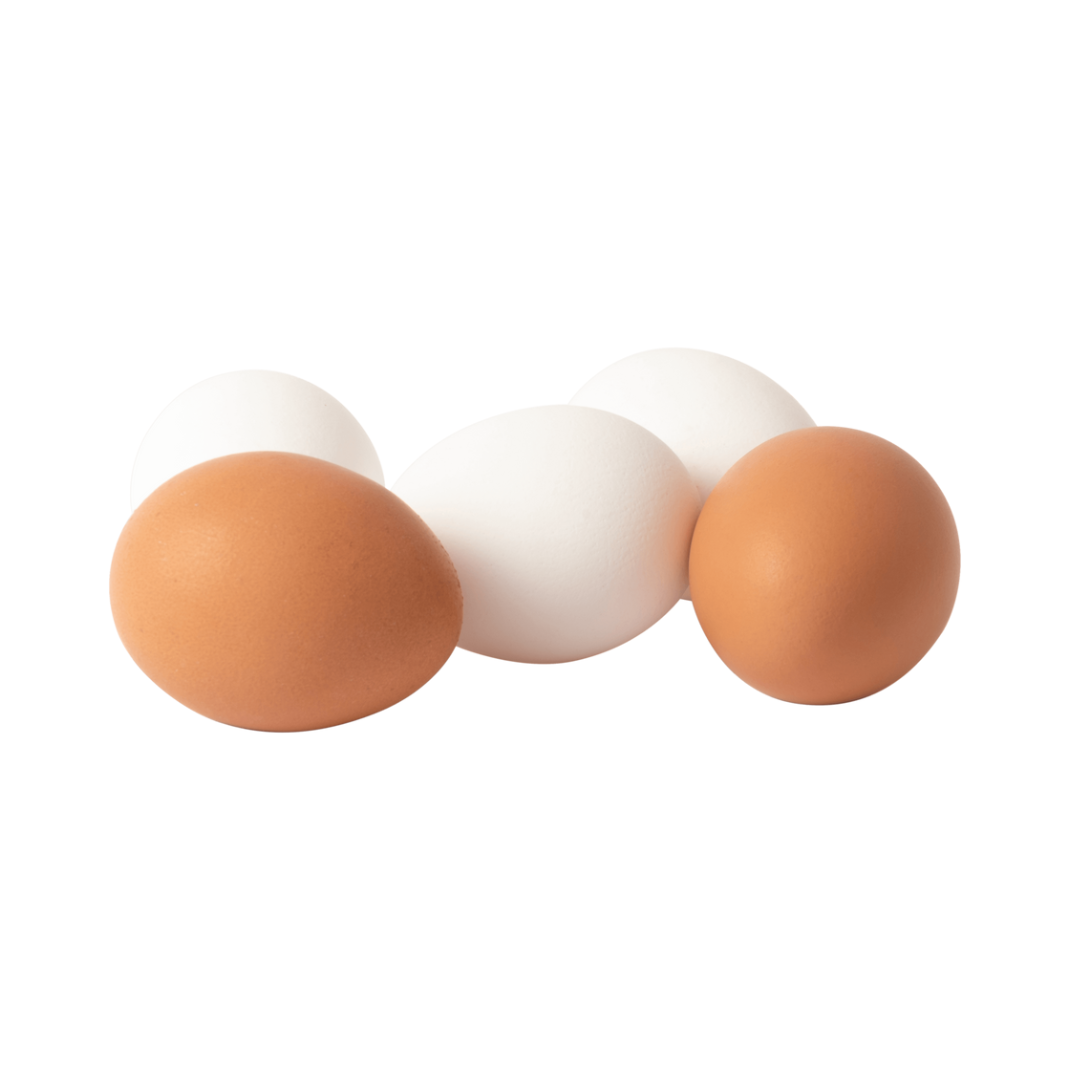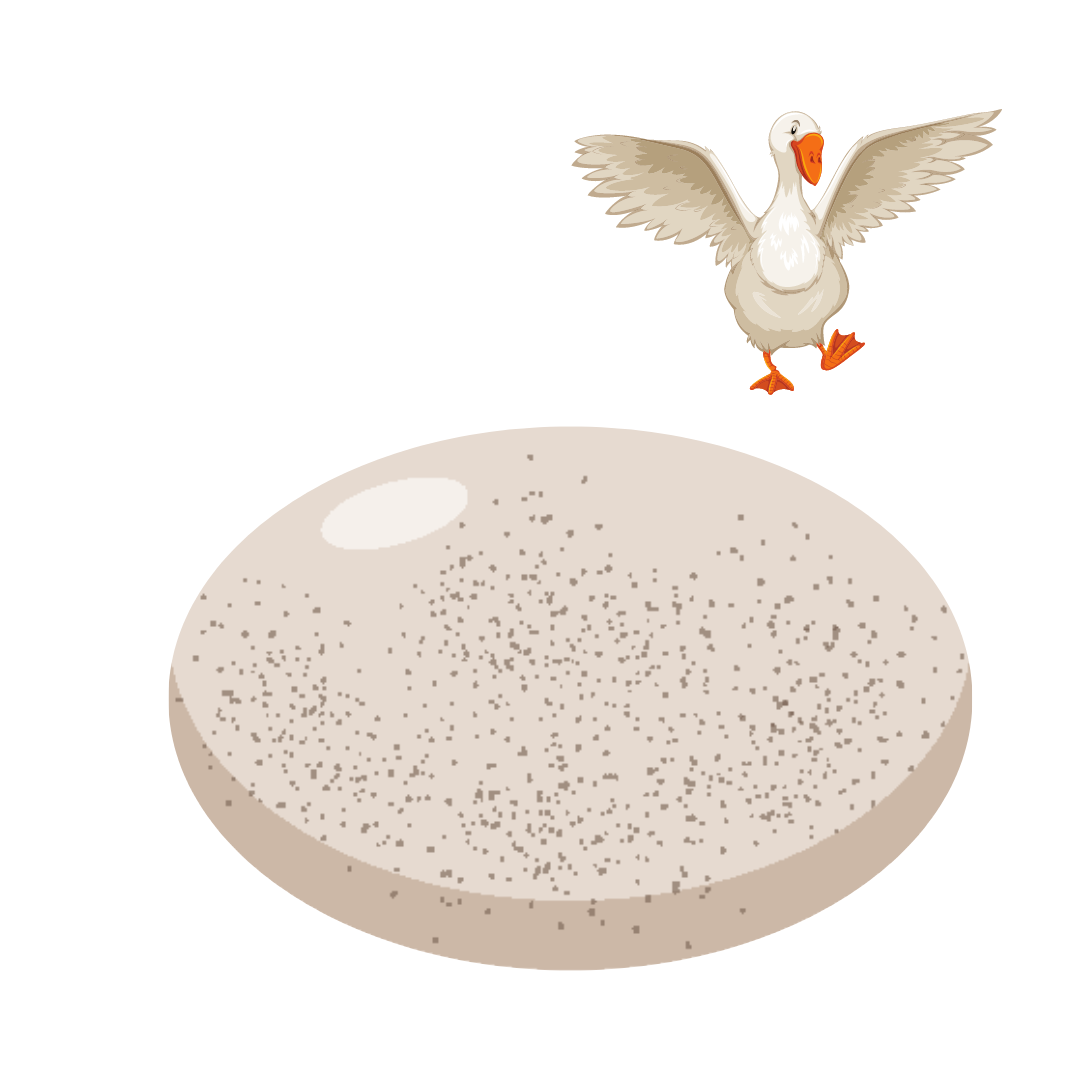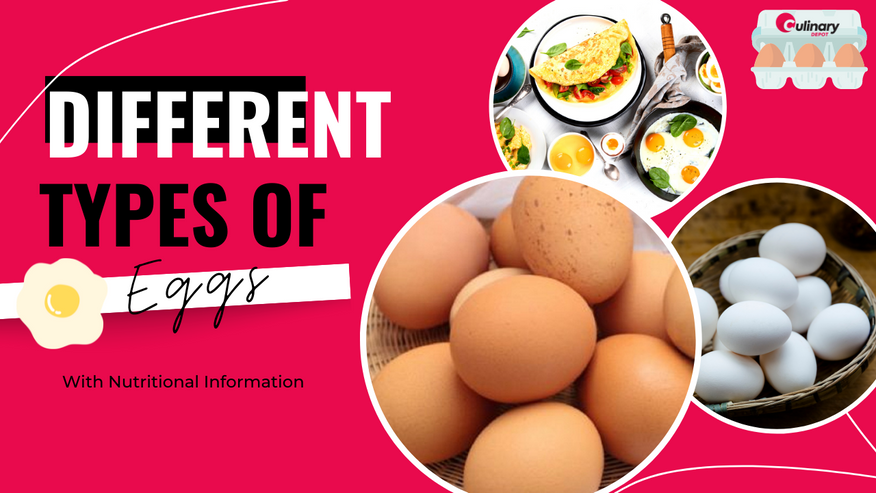Jul 21st 2022 - Monica Cunanan
Different Types of Eggs: How to Choose the right one?
Eggs are one of the best kitchen workhorses. You can cook them any way you want—scrambled, fried, baked, poached ,or boiled—and they're great for elevating recipes too, like Chicken Fried Egg and Pesto Eggs. Eggs are also the key to delicious breakfasts, healthy snacks, and even dessert recipes.
What's up with all the various types of eggs at the store? It turns out that knowing the labels and grades that are given to eggs is a really good idea, and it's actually quite easy to do once you know a few basic things.
Here's our guide to all the various kinds of eggs out there.
Types of Eggs
They range from types to egg grades, sizes, and even color! Here's a quick rundown of the different types of eggs:

- Conventional Cage Eggs: Standard White/ Brown Eggs
- Cage-free eggs/ Free-Run Eggs
- Free-range eggs
- Organic and nutritionally-enriched eggs
- Processed eggs
- Vitamin-Enhanced Eggs
- Vegetarian Eggs
- Furnished / Enriched / Nest-Laid Eggs
- Omega-3 Eggs
Different Types of Eggs
Conventional cage eggs

Eggs produced by chickens raised in conventional housing systems/ battery cages have been the standard for decades. These eggs come from hens that live in climate-control barns in cages of about six to seven per cage. Each chicken has about 60 to 80 sq. inches of floor space. There are two types of conventional cage eggs:
- Standard White Eggs
- Standard Brown Eggs
Cage-free eggs/ Free-Run Eggs
 These eggs come from hens that are raised in free-range (barn or aviary) housing systems. These chickens have more space to roam, about 140 sq ft per chicken — generally in some kind of room or open area. Free range systems allow the chickens to wander freely within an enclosure, but also provide them with enrichment such as nesting space and other perches. They're still somewhat contained.
These eggs come from hens that are raised in free-range (barn or aviary) housing systems. These chickens have more space to roam, about 140 sq ft per chicken — generally in some kind of room or open area. Free range systems allow the chickens to wander freely within an enclosure, but also provide them with enrichment such as nesting space and other perches. They're still somewhat contained.
Free-range eggs

These eggs come from chickens that are raised in free-run (barn or aviaries) housing systems, which allow them access to food, water, and outdoor runs when weather permits.. They have more of a chance to forage freely than eating from automated feed and watering lines.
Organic and nutritionally-enriched eggs

Eggs that are organic come from hens that ate natural feed, and they usually reside in a cage-free system or at least free range. Most of the time, these chickens are raised in free-range housing systems. They are fed only organic feed that is certified organic, meaning that it only contains ingredients grown without pesticides, herbicide, or commercial fertilizers. Look out for a certified organic symbol next to the egg carton. Omega-3 enriched eggs come from hens who are given extra omega- 3s in their diet.
Processed eggs

Egg substitutes, such as eggs that are peeled and packaged (e.g., hard-boiled), liquid eggs, and powdered eggs, are all examples of processed egg products.
They come from eggs that have been broken into pieces by special machines and then pasteurized. These products usually contain added ingredients (such as preservatives, flavorings, or colors), and this process allows for specific formulations (such as egg whites only).
Vitamin-Enhanced Eggs

These eggs come from chickens that were given feed that was nutritionally enhanced to include higher levels for specific vitamins (such as Vitamin D or Vitamin E) than normal chicken feed. As a result, the egg laid by these chickens contains correspondingly higher amounts of the particular nutritional content.
Vegetarian Eggs
These eggs come from chickens that were fed exclusively with plant-based ingredients.
Furnished / Enriched / Nest-Laid Eggs

These eggs come from chickens that are raised in furnished houses. Furnished housing provides them with more space to move around, while enrichments provide them with a variety of opportunities to express their natural behaviors. Enrichments include nest boxes, perches, scratching pads, and dust baths.
Omega-3 Eggs
These eggs come from chickens that were fed a diet containing flax. As a result, the chicken eggs they lay contain more Omega-3s.
Egg grades
The process of grading an egg is kind of like a Beauty Pageant (but for eggs). Eggs are inspected and graded by federal agencies before they reach supermarkets. Companies can also go one step further and pay for USDA grades. If you see an egg grade within a USDA seal on the carton, then that’s what it means.
There are three grades:
- Grade A eggs: These eggs have a good appearance, with firm and slightly thick egg whites and round yolks with little to no defects
- Grade A eggs: these are the same as grade AAA eggs, except the egg white is only considered “reasonably firm.”
- Grade B eggs: There may be discoloration on the shell. The whites aren't as firm, the yolk's not as round. You typically won't see these in boxes at the store. They're often used in liquid egg products where they don't have to look presentable.
Egg Sizes Matter
There are different sizes of eggs. The bigger they are, the more they contain. Using a medium egg instead of a large one in a recipe isn't a huge deal, but it might make a difference if you're making a dish that calls for multiple eggs. Here is the official USDA egg classification.
USDA Egg Size Classification
| Egg Size | S | M | L | XL | J |
| Liquid per Egg | 1.5 oz | 1.75 oz | 2 oz | 2.25 oz | 2.5 oz |
| Liquid per Dozen | 18 oz | 21 oz | 24 oz | 27 oz | 1.5 oz |
Nutrition per Egg
| S | M | L | XL | J | |
| Protein (g) | 4.77 | 5.52 | 6.28 | 7.03 | 7.91 |
| Fat (g) | 3.61 | 4.18 | 4.75 | 5.33 | 5.99 |
| Carbohydrate (g) | 0.27 | 0.32 | 0.36 | 0.4 | 0.45 |
| Sugar (g) | 0.15 | 0.16 | 0.18 | 0.21 | 0.23 |
| Potassium (mg) | 52 | 61 | 69 | 77 | 87 |
| Sodium (mg) | 54 | 62 | 62 | 80 | 89 |
| Calories | 54 | 63 | 63 | 80 | 90 |
Egg colors
Different types of chickens lay different colored eggs — from bluish tones to creamy pinks and even dark brown (and yes, green eggs are real, too). The two colors widely available in stores are white eggs and brown eggs. While most people assume brown eggs are healthier and organic, that’s not the case. They were just hatched from a different breed of chicken, and they are priced higher because that type of chicken is usually larger and more expensive to raise.
Ways to eat eggs

- Poached Eggs
- Eggs Benedict
- Hard Boiled Eggs
- Breakfast Casserole
See More: Different Egg Dishes
Different Types Of Edible Eggs
Many people around the globe look beyond just chicken eggs for nutrition and taste too. There are several other kinds of eggs that are edible, nutritious, and tasty. They include bird eggs and fish eggs, for example. You can savor these eggs in several different ways. Here are the most common and nutritious types of edible eggs:
Chicken Eggs
These are the most common types of eggs that you can buy at any market when you ask them for 'EGGS'.
Quail Eggs

Quite similar to white chickens eggs, quail eggs have brownish spots on them and are comparatively smaller than regular chicken eggs. Rich in vitamin D and B12, they're quite similar to chicken eggs for nutrition too.
Duck Eggs

Duck eggs have a higher amount fat and protein than chicken eggs. It contains vitamin B complexes, which makes it thicker and keeps it fresh for a longer period.
Caviar

Among the most exquisite foods, caviar is a fish egg. They are from the roe of salt-cured fish. Sea minerals are rich in anti-oxidants and are a treasure of sea minerals Caviar is a luxury enjoyed around the world and is highly valued.
Goose Eggs

Double the size of chicken eggs, goose eggs have a much-enriched taste and contain more protein than regular eggs. A goose egg has 19.97 g. of protein and a chicken egg has 6.23 grams. While goose eggs are hard to come by, the egg itself is extremely difficult to obtain as a goose lays no more than 40 eggs per season.
Turkey Eggs
Turkey eggs are similar in size to duck eggs. It has a thicker texture because of its egg yolks and egg white. They're rich in calcium too. Turkey hens don't lay nearly as much as chicken hens. So the ones that get made are used by turkey farmers to create more turkeys. An average turkey lays an average of 100 eggs per year.
EMU eggs
EMU eggs weigh approximately one kilo. The Emu egg consists of distinct layers; the outermost layer has a distinctive texture and is dark green to nearly black in color.
Hilsa Eggs
Hilsa eggs are quite popular in Bangladesh and eastern India. Hilsa is an edible fish found commonly in these regions. Its eggs are rich in Omega 3 fatty acids and contain other nutrients too.
Ostrich Eggs
 They are the largest birds eggs on the planet. Ostrich eggs have a thick shell that makes them very hard to crack open They can weigh up to two kilograms and are roughly 20 times thicker than a chicken egg The percentage of protein and fat is similar to that of chicken eggs.
They are the largest birds eggs on the planet. Ostrich eggs have a thick shell that makes them very hard to crack open They can weigh up to two kilograms and are roughly 20 times thicker than a chicken egg The percentage of protein and fat is similar to that of chicken eggs.
Bantam Eggs
Bantams are smaller than chicken eggs, and they're nothing but eggs from a small variety of heifers called Bantams. Regardless, they're much richer in iron than any other vegetable.
Need Dinnerware/ Equipment for your Food Business?
Here at CulinaryDepot, we carry all kinds of commercial kitchen equipment and dinnerware for your business. Learn more about the tools for professional and home bartenders. Get in touch, and we'll help you get all the restaurant equipment you need to run your business!

